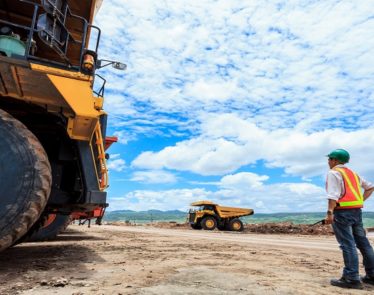
VANCOUVER, BC, June 14, 2022 – New Pacific Metals Corp. (TSX:NUAG)(NYSE:NEWP) (“New Pacific” or the “Company”) is pleased to announce that a 6,000-metre (“m”), one rig drilling program has commenced at the Silverstrike Project. The program will initially focus on testing a broad gold zone identified by the Company and by historical drilling.
The Silverstrike Project with an area of approximately 13km² is located approximately 140 kilometres (“km”) southwest of La Paz, Bolivia, or approximately 450 km northwest of New Pacific Metals Corp.’s (TSX:NUAG)(NYSE:NEWP) Silver Sand Project. The Company has 98% interest in the Silverstrike Project with its Bolivian partner and will cover 100% of the future expenditures of exploration, mining, development and production activities.
In the previous news releases (September 29, and November 19, 2020), the Company identified near-surface broad-zones of silver mineralization in altered sandstones to the North, with similarities to that at Silver Sand; and in the Silverstrike Central area, a near surface broad Silver zone that occurs near the top of a 900 m diameter volcanic dome of ignimbrite (volcaniclastic sediments) units with intrusion of rhyolite dyke swarm and andesite flows; and a broad gold zone occurs half way from the top of the dome.
The Gold Zone at the Silverstrike Central
Gold-rich mineralization at Cerro Tatitu Kkollu occurs adjacent to the contact zones between the ignimbrites and the rhyolite dyke swarm.
A total of 277 channel chip samples were collected over three key outcropping areas, the best results were 4.7 m grading 14.76 g/t Au and 27 g/t Ag from a historical mining adit; 42m @ 1.02g/t Au and18g/t Ag, and 10m @ 1.45g/t and14g/t Ag.
A single dump grab sample collected from a historic exploration adit returned 1.66g/t Au, 154g/t Ag, and 7.97% Cu.
Three holes Drilled by Rio Tinto in 1995 on the gold zone returning broad intervals of Au mineralization from surface:
Hole BER-02 – 302m grading 0.27 g/t Au, including 42m grading 0.52g/t Au.
Hole BRC-04 – 110m grading 0.46 g/t Au, including 22m grading 1.42 g/t Au.
Hole BRC-12 – 258m grading 0.19 g/t Au.
Based on the Company’s field mapping, chipping sample and limited historical drilling results, the Company interprets the gold zone as very similar to the gold discovery in the Carangas Project that the silver rich zone sits at the top of the system stacking on top of the gold mineralization in volcaniclastic sediments that intruded by rhyolitic porphyry dyke swarms.
QUALIFIED PERSON
The scientific and technical information contained in this news release have been reviewed and approved by Alex Zhang, P. Geo., Vice President of Exploration, who is a Qualified Person for the purposes of National Instrument 43-101 — Standards of Disclosure for Mineral Projects (“NI 43-101”). The Qualified Person has verified the information disclosed herein, including the sampling, preparation, security and analytical procedures underlying such information, and is not aware of any significant risks and uncertainties that could be expected to affect the reliability or confidence in the information discussed herein.
ABOUT NEW PACIFIC
New Pacific Metals Corp. (TSX:NUAG)(NYSE:NEWP) is a Canadian mining company exploring and developing the silver and gold deposits in Bolivia. Its flagship Silver Sand Project is a large pure silver deposit amenable to open pit & heap leach operation. The newly discovered Carangas gold-silver Project is an extensive historical silver digging site with a thick gold zone discovered underneath. The Silverstrike Project is another extensive historical silver digging site at surface to be drilled.
To receive company news by e-mail, please register using New Pacific Metals Corp.’s (TSX:NUAG)(NYSE:NEWP) website at www.newpacificmetals.com.
CAUTIONARY NOTE REGARDING FORWARD-LOOKING INFORMATION
Certain of the statements and information in this news release constitute “forward-looking statements” within the meaning of the United States Private Securities Litigation Reform Act of 1995 and “forward-looking information” within the meaning of applicable Canadian provincial securities laws. Any statements or information that express or involve discussions with respect to predictions, expectations, beliefs, plans, projections, objectives, assumptions or future events or performance (often, but not always, using words or phrases such as “expects”, “is expected”, “anticipates”, “believes”, “plans”, “projects”, “estimates”, “assumes”, “intends”, “strategies”, “targets”, “goals”, “forecasts”, “objectives”, “budgets”, “schedules”, “potential” or variations thereof or stating that certain actions, events or results “may”, “could”, “would”, “might” or “will” be taken, occur or be achieved, or the negative of any of these terms and similar expressions) are not statements of historical fact and may be forward-looking statements or information. Such statements include, but are not limited to: statements regarding the anticipated timing, amount and completion of exploration, drilling, development, construction, and other activities or achievements of the Company; anticipated outcomes therefrom; future economics of the Company’s projects; timing of receipt of permits and regulatory approvals; estimates of the Company’s revenues and capital expenditures; and other future plans, objectives or expectations of the Company.
Forward-looking statements or information are subject to a variety of known and unknown risks, uncertainties and other factors that could cause actual events or results to differ from those reflected in the forward-looking statements or information, including, without limitation, risks relating to: global economic and social impact of COVID-19; fluctuating equity prices, bond prices, commodity prices; calculation of resources, reserves and mineralization, general economic conditions, foreign exchange risks, interest rate risk, foreign investment risk; loss of key personnel; conflicts of interest; dependence on management, uncertainties relating to the availability and costs of financing needed in the future, environmental risks, operations and political conditions, the regulatory environment in Bolivia and Canada; risks associated with community relations and corporate social responsibility, and other factors described under the heading “Risk Factors” in the Company’s Annual Information Form and its other public filings. This list is not exhaustive of the factors that may affect any of the Company’s forward-looking statements or information.
The forward-looking statements are necessarily based on a number of estimates, assumptions, beliefs, expectations and opinions of management as of the date of this news release that, while considered reasonable by management, are inherently subject to significant business, economic and competitive uncertainties and contingencies. These estimates, assumptions, beliefs, expectations and options include, but are not limited to, those related to the Company’s ability to carry on current and future operations, including: the duration and effects of COVID-19 on our operations and workforce; development and exploration activities; the timing, extent, duration and economic viability of such operations; the accuracy and reliability of estimates, projections, forecasts, studies and assessments; the Company’s ability to meet or achieve estimates, projections and forecasts; the stabilization of the political climate in Bolivia; the Company’s ability to obtain and maintain social license at its mineral properties; the availability and cost of inputs; the price and market for outputs; foreign exchange rates; taxation levels; the timely receipt of necessary approvals or permits, including the ratification and approval of the Mining Production Contract with COMIBOL by the Plurinational Legislative Assembly of Bolivia; the ability to meet current and future obligations; the ability to obtain timely financing on reasonable terms when required; the current and future social, economic and political conditions; and other assumptions and factors generally associated with the mining industry.
Although the forward-looking statements contained in this news release are based upon what management believes are reasonable assumptions, there can be no assurance that actual results will be consistent with these forward-looking statements. All forward-looking statements in this news release are qualified by these cautionary statements. Accordingly, readers should not place undue reliance on such statements. Other than specifically required by applicable laws, the Company is under no obligation and expressly disclaims any such obligation to update or alter the forward-looking statements whether as a result of new information, future events or otherwise except as may be required by law. These forward-looking statements are made as of the date of this news release.
CAUTIONARY NOTE TO US INVESTORS
The disclosure in this news release and referred to herein was prepared in accordance with NI 43-101 which differs significantly from the requirements of the U.S. Securities and Exchange Commission (the “SEC”). The terms “proven mineral reserve”, “probable mineral reserve” and “mineral reserves” used in this news release are in reference to the mining terms defined in the Canadian Institute of Mining, Metallurgy and Petroleum Standards (the “CIM Definition Standards”), which definitions have been adopted by NI 43-101. Accordingly, information contained in this news release providing descriptions of our mineral deposits in accordance with NI 43-101 may not be comparable to similar information made public by other U.S. companies subject to the United States federal securities laws and the rules and regulations thereunder.
Investors are cautioned not to assume that any part or all of mineral resources will ever be converted into reserves. Pursuant to CIM Definition Standards, “Inferred mineral resources” are that part of a mineral resource for which quantity and grade or quality are estimated on the basis of limited geological evidence and sampling. Such geological evidence is sufficient to imply but not verify geological and grade or quality continuity. An inferred mineral resource has a lower level of confidence than that applying to an indicated mineral resource and must not be converted to a mineral reserve. However, it is reasonably expected that the majority of inferred mineral resources could be upgraded to indicated mineral resources with continued exploration. Under Canadian rules, estimates of inferred mineral resources may not form the basis of feasibility or pre-feasibility studies, except in rare cases. Investors are cautioned not to assume that all or any part of an inferred mineral resource is economically or legally mineable. Disclosure of “contained ounces” in a resource is permitted disclosure under Canadian regulations; however, the SEC normally only permits issuers to report mineralization that does not constitute “reserves” by SEC standards as in place tonnage and grade without reference to unit measures.
Canadian standards, including the CIM Definition Standards and NI 43-101, differ significantly from standards in the SEC Industry Guide 7. Effective February 25, 2019, the SEC adopted new mining disclosure rules under subpart 1300 of Regulation S-K of the United States Securities Act of 1933, as amended (the “SEC Modernization Rules”), with compliance required for the first fiscal year beginning on or after January 1, 2021. The SEC Modernization Rules replace the historical property disclosure requirements included in SEC Industry Guide 7. As a result of the adoption of the SEC Modernization Rules, the SEC now recognizes estimates of “Measured Mineral Resources”, “Indicated Mineral Resources” and “Inferred Mineral Resources”. In addition, the SEC has amended its definitions of “Proven Mineral Reserves” and “Probable Mineral Reserves” to be substantially similar to corresponding definitions under the CIM Definition Standards. During the period leading up to the compliance date of the SEC Modernization Rules, information regarding mineral resources or reserves contained or referenced in this news release may not be comparable to similar information made public by companies that report according to U.S. standards. While the SEC Modernization Rules are purported to be “substantially similar” to the CIM Definition Standards, readers are cautioned that there are differences between the SEC Modernization Rules and the CIM Definitions Standards. Accordingly, there is no assurance any mineral reserves or mineral resources that the Company may report as “proven mineral reserves”, “probable mineral reserves”, “measured mineral resources”, “indicated mineral resources” and “inferred mineral resources” under NI 43-101 would be the same had the Company prepared the reserve or resource estimates under the standards adopted under the SEC Modernization Rules.
SOURCE New Pacific Metals Corp. (TSX:NUAG)(NYSE:NEWP)
[BONUS-POPUP id=”1″]









